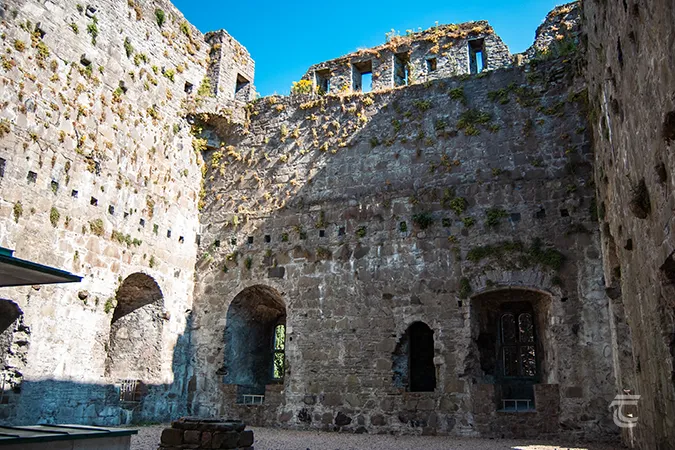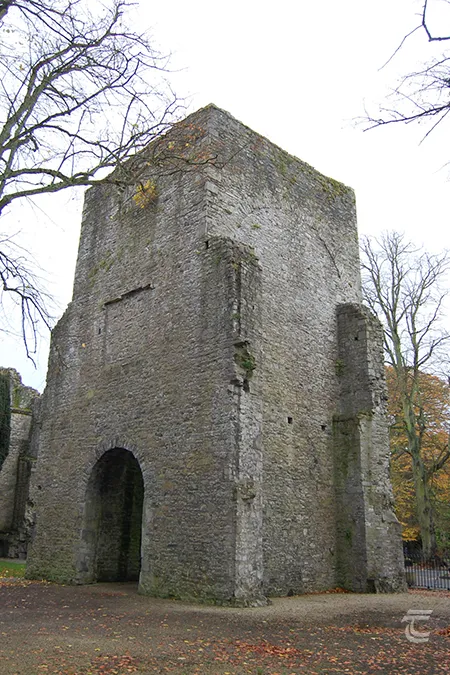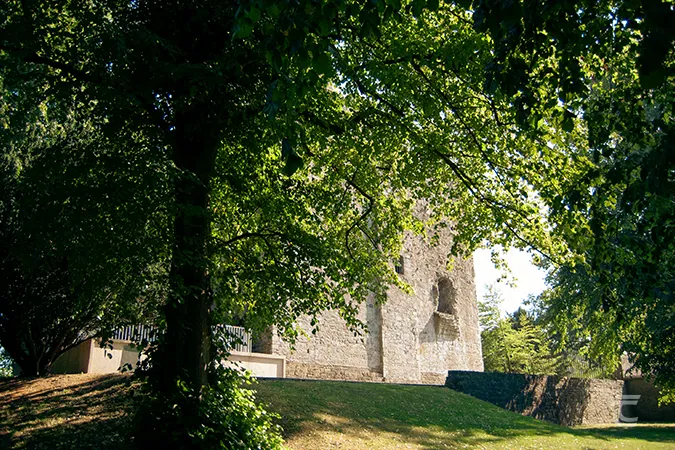Maynooth Castle
From the late fifteenth century to the mid-16th century, Ireland was ruled from Kildare by the powerful Fitzgerald family, based at their castle in Maynooth. After the Norman invasion of Ireland, the land around Maynooth, which had been owned by the O’Byrne family, was granted to Gerald Fitzmaurice Fitzgerald by Richard de Clare, also known as Strongbow. Fitzgerald chose Maynooth as his base. There are a number of architectural similarities between the keep of Maynooth and that of Trim Castle. It is quite likely that there was sharing of knowledge, resources, architects and builders between the two powerful medieval mangnates, de Lacy and Fitzgerald.
For practical information about visiting this site Click Here
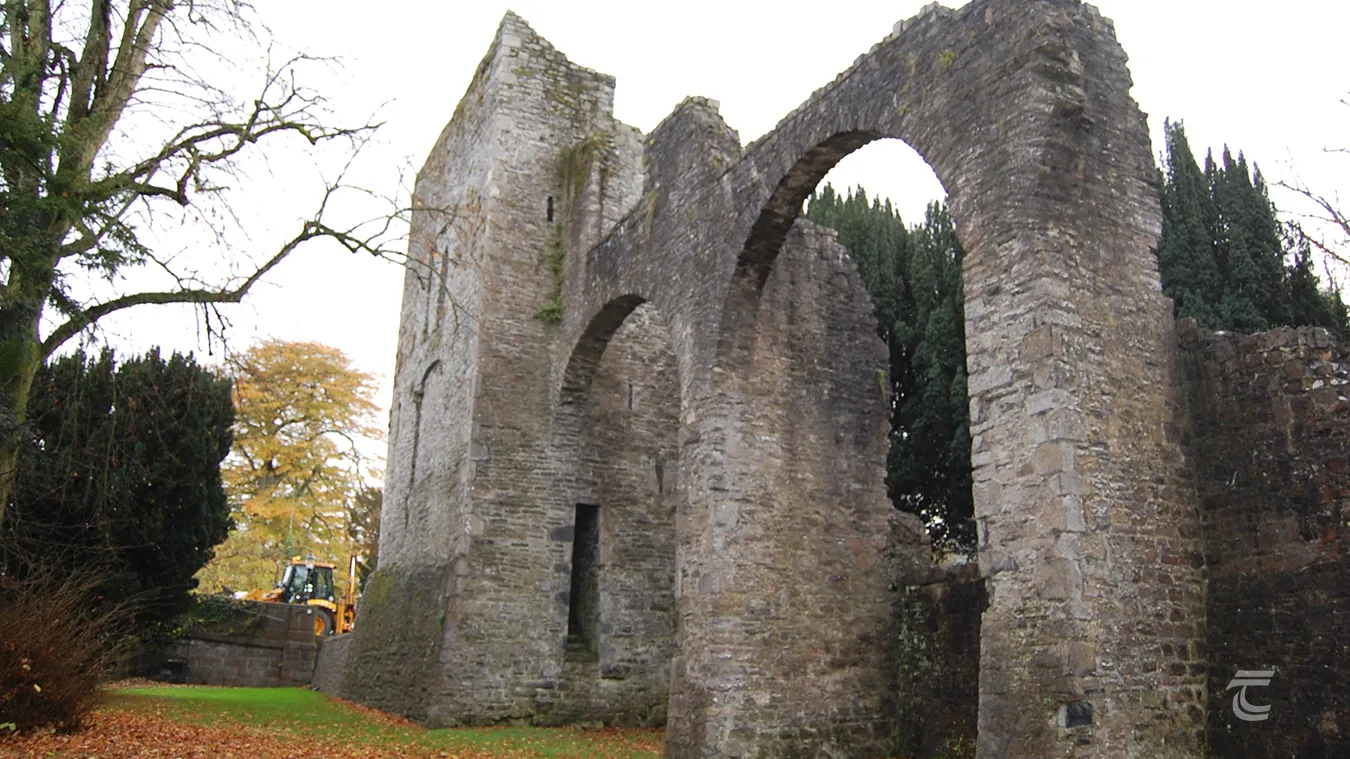
Maynooth Castle • Kildare
The Rise of the Fitzgeralds
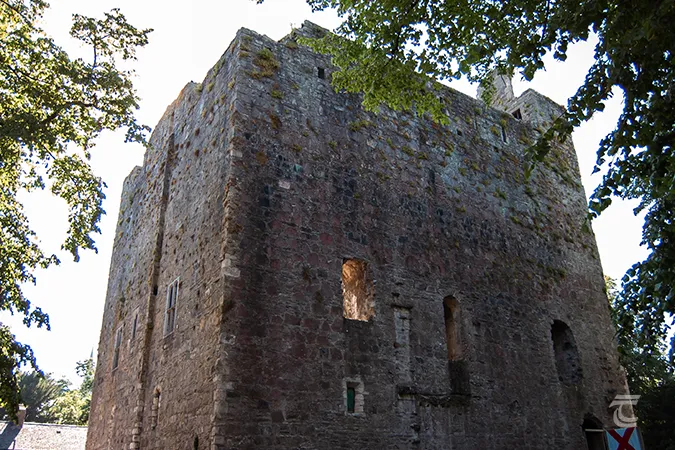
The keep (or donjon) of Maynooth Castle • Kildare
By the end of the 13th century, the Fitzgeralds were one of the leading Anglo-Norman families in Ireland. Their profile was boosted considerably in 1316 when King Edward II raised John Fitzthomas Fitzgerald to Earldom of Kildare for his services during Edward the Bruce’s invasion of Ireland. However, it was in the late 15th century that the Fitzgeralds reached their apogee. Gerald Fitzgerald was trusted by King Henry VII to rule Ireland in his name. This brought considerable wealth to Fitzgerald, which is clear from the records that describe Maynooth as richly decorated. His son (also called Gerald, but known as Geraróid Óg) was Lord Deputy of Ireland for King Henry VIII on three occasions (1513–24, 1524–28, and 1532–34).

The keep (or donjon) of Maynooth Castle • Kildare
The Rebellion of Silken Thomas
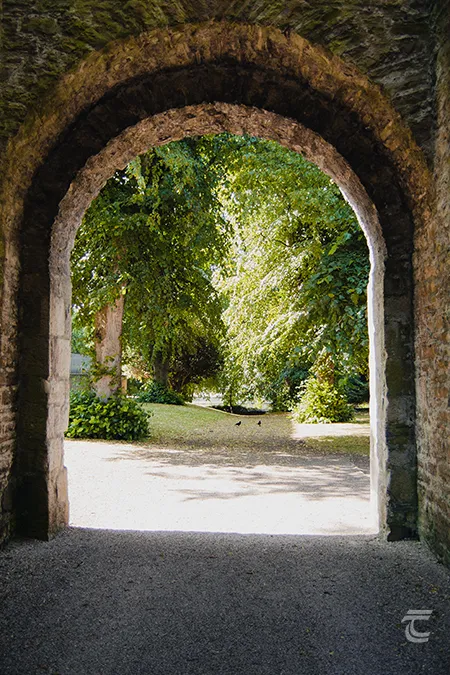
Through the gateway of the castle • Kildare
Gerald Fitzgerald had unprecedented power in Ireland and jealously guarded his families interests. Fitzerglad was summoned to London in 1534 by King Henry VIII and left his soon Thomas as deputy governor in his absence. Thomas was an exuberant young hothead, known as Silken Thomas for the silk that adorned his men’s helmets. A false rumour spread that the Earl had been executed by the King, enraging Silken Thomas. He charged into St Mary’s Abbey where the King’s Council in Ireland was meeting and threw down the sword of the state in defiance. He immediately began a campaign against the King’s forces in Ireland. His men cut off the water supply to Dublin and laid siege to the city.
The campaign was going well until the Crown forces realised that Silken Thomas has neglected to defend his own stronghold of Maynooth. The English Army attacked the Castle and killed many of the inhabitants. Despite Silken Thomas efforts, he failed to save his family home. He was captured and brought in chains to London where he learned that his father had died of natural causes, rather than execution. There, along with his five uncles, he was hung, drawn and quartered.
This marked what was effectively the end of Fitzgerald ascendancy. By the early 17th century, Maynooth Castle began to fall into disrepair. Richard Boyle, father of the famous scientist Robert Boyle, spent large sums of money renovating the Castle when his daughter married George Fitzgerald who had become a ward of the family. His works involved the demolition of many of the medieval buildings and the Castle suffered further damage during the Catholic Confederacy Wars of the 1640s.
Today the castle is under the care of the OPW, and visitors can enjoy the surrounding grounds while taking in the imposing medieval keep.
Upper left: the interior of the keep • Lower left: the leafy castle grounds • Right: a castle tower
Top: the interior of the keep • Middle: a castle tower • Bottom: the leafy grounds of the castle
Maynooth Castle Visitor Information
Discover the story of this castle, once the stronghold of the powerful Fitzgerald family.
